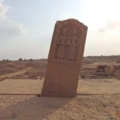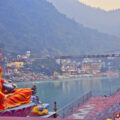Amongst Delhi’s unmissable historical monuments, Qutub Minar has astounded locals and tourists alike for decades with its imposing height and unique features. Over the years, the entire Qutub Complex was improved and transformed into a stunning heritage site that shines a much-needed spotlight on Delhi’s fascinating architectural past.
Recently, to further highlight the distinct structural brilliance of the city, and increase night tourism, the Archaeological Survey of India, along with NBCC India, has been illuminating Delhi’s many historical sites, such as the Red Fort and the Safdarjung Tomb.
All of these sites, which now includes the Qutub Minar, are open till late and are proving to be the perfect excuse to appreciate ancient design in an unusual and visually appealing manner.

Qutub Minar and the surrounding complex has a magnificent aura, no matter the time of the day you visit it. Weekday mornings and afternoons are typically crowded with school children and tourists, visiting the towering minaret in thousands.
At night, the situation is unhurried and quiet, with a somewhat romantic aura that lingers in the air. It’s the perfect escape from the hustle of the city, in the tranquil surroundings of vintage magnificence.


Qutub Minar is worth a visit during the day, but its night views are in a league of their own. Before proceeding further, here are the basic facts that make it one of the must-see tourist spots in New Delhi:
- The Qutub Minar is a UNESCO World Heritage Site consisting of 5 storeys.
- Qutbuddin Aibek ordered the construction of the minaret. However, it was completed, after his death, by his son, Iltutmish.
- The Qutub Minar has been struck by lightning twice. The first time, Firoz Shah Tughluq had the fourth storey repaired, but also added one more, turning it into the five-storey monument that it is today
- The second time lightning struck, Sikander Lodi was the ruler who made necessary repairs to the tower.


- The Qutub Minar is the highest stone tower in India with a height of 238 ft. (72.5 metres).
- Initially, it was possible to walk all the way to the top-most section of the Qutub Minar. However, after a stampede, caused due to a power failure, resulted in the death of more than 40 visitors, the minaret was closed to the public.
- A surprising fact about the Qutub Minar is that although it seems taller to most, it is actually shorter than Taj Mahal by five feet.
- The Qutub Minar complex is home the famous, Iron Pillar, weighing in at 6000 kilos, which is made of corrosion-free wrought iron.


Tips for viewing Qutub Minar during the Night
The best way to experience the Qutub Minar is to arrive an hour before sundown, and stick around till after dark.
After sunset, the majority of the gardens and areas surrounding the central area of the complex are cordoned off. So, if you want to view everything, it makes sense to get there early.

Amongst the places you can walk around in the evening, there are still quite a few areas that are not lit up properly. Thus, it helps to have a torch (phone light) handy, especially if you are there with kids.
There are guards all around the complex. However, some areas are secluded, dark and a little eerie. It is best to stay together in a group, and not allow small children to run around unaccompanied.
Thanks to the presence of the guards, the place is extremely safe. Still, take necessary precautions as there are lots of open spaces around the Qutub Minar.

Photography enthusiasts can make the most of their phone cameras or DSLRs (no extra charge).
As is the case with most monuments in the country under the ASI, carrying a tripod is not allowed inside Qutub Minar. I’m unsure how strict they are about this rule, though.

The Qutub Minar is open till 10pm. Some places mention the closing time as 11pm, but that might be during the summer months.
The entry fee is Rs 40 for Indian adults and Rs 35 if you buy the ticket using a QR code (standees are placed right outside the ticket counter). The day-time ticket for foreign tourists is Rs 500. The night-ticket might be slightly more expensive. Children go in for free.








10 Comments
arv!
It is a great initiative. Many Bazaars in Jaipur and a few tourist attractions in Jaipur have also been illuminated under the night tourism program. I don’t think that a full potential has been harnessed but it is a step in the right direction.
Ticker Eats The World
Good to know. Will have to check it out when there 🙂
arv!
sure 🙂